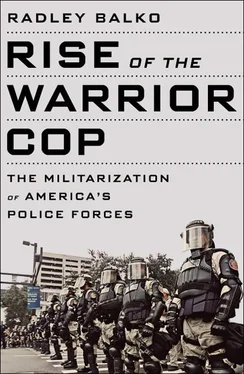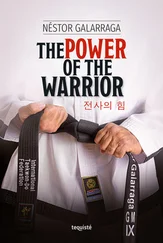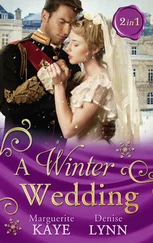As the country grew, three distinctive policing traditions began to emerge, coinciding with three regions—the Northeast, the South, and the western frontier.
In the Northeast, as the cities grew larger and more diverse in the early eighteenth century, their residents encountered more crime. Throughout the seventeenth and eighteenth centuries, early American cities first installed night watch patrols , first voluntary and then paid. The night watches were fairly successful at rounding up drunks and preventing petty infractions, but the low-paying positions would prove inadequate when cities began to experience riots, mobs, and more serious crimes.
The Southern colonies were more agrarian, less compact, and more homogeneous than the colonies of the Northeast. The primary threat to public safety in the South—at least in the minds of whites—was the possibility of slave revolts. As a result, the first real organized policing systems in America arguably began in the South with slave patrols . The patrols were armed and uniformed, and typically had broad powers to arrest, search, and detain slaves. The slave patrols’ main responsibilities were to guard against rebellions and to look for escaped slaves. They had the power to enter slave quarters at will, whether or not they had permission from the slaves’ owner. They could even enforce some laws against plantation owners, such as laws prohibiting the education of slaves. By the middle of the eighteenth century, every Southern colony had passed laws formalizing slave patrols. It became the primary policing system in the South. In many jurisdictions—most notably Charleston, South Carolina—slave patrols would eventually morph into the official police force.
On the western frontier, early policing was more piecemeal. Northern settlers tended to congregate together and set up systems in the Northern tradition, while pioneers from the South followed the Southern tradition. But the expanse of the frontier didn’t always accommodate either system. Often there was just too much ground to cover, and the territory was too sparsely populated. That gap was often filled by vigilantes and private police for hire. The vigilante groups came together in response to some threat to public order, then dissolved once the threat had subsided. As the name implies, they tended to operate outside the formal legal system and were naturally more prone to pop up where the legal system either didn’t exist or was too weak to maintain order. In some cases, vigilante groups were better than no justice at all. In other cases, they were quite a bit worse.

THE FIRST MODERN POLICE FORCE AS WE KNOW IT TODAY WAS created in 1829 in London by Sir Robert Peel. He and his father had been pushing the idea for decades, but British concerns over the nation’s civil liberties tradition had repeatedly killed the idea. Concerned about the worsening conditions in the city, Parliament finally gave its approval in 1829, but only after Peel put in place assurances and checks to retain some local control over the force and ensure that police officers’ responsibilities were limited to fighting crime and protecting individual rights—his task was to convince the city that a police force would not be an army enforcing the will of a centralized power.
The British police force began with three thousand officers. They wore uniforms to make themselves recognizable, but Peel made the uniforms blue to distinguish them from the red worn by the British military. Peel was sensitive to concerns about standing armies, but he also believed that a successful police force would need at least some of the structure and discipline of a military influence. Peel appointed a retired colonel as one of his two first supervising justices. Thus, the inaugural police force took on a military-like top-down administrative structure, and even borrowed some military titles. It’s a tradition that continues in most police departments in the United States today.
Peel and his justices set out a strict code of conduct. Officers were to avoid confrontation when at all possible. They were to be civil and polite when interacting with citizens. Most of all, Peel hammered home the principle that his police force worked for the people of London, not against them. Nevertheless, it took a while for the public to warm to the idea.
Across the Atlantic in rapidly urbanizing America, larger cities began to adopt the British model, albeit with some Americanized adjustments. The first modern-style police department in the United States was established in New York in 1845. Boston and Philadelphia soon followed. New York began its experiment with eight hundred policemen. Fearing that the London force was already too much like an army, the New York cops began their patrols unarmed, and without uniforms. Early American police departments were also much more democratic than the system in London. Peel and his top aides handpicked the officers to work in London. In the United States, early police officers were nominated by ward leaders and political bosses, then appointed by the mayor. Cops were required to live in the wards they patrolled. All of this tended to make early police departments more like service agencies than law enforcement bodies. Since ward leaders were elected, they found they could pressure local commanders to prioritize police duties in ways that would help get them reelected. In some neighborhoods, police officers ran soup kitchens and homeless people were given shelter in police stations to sleep. This democratic style of policing also gave police (or more accurately, their commanders) discretion to enforce laws in ways that reflected the priorities of the communities they patrolled. Alcohol laws, for example, might be strictly enforced in one part of a city, but rarely if ever enforced in another.
In some ways, this wasn’t all that dissimilar to the way laws had been enforced before police departments existed, when transgressions within a community were handled by its members. But there were some clear drawbacks. The job of police officer had quickly become a patronage position. The only qualification for becoming a cop was a political connection. Mass firings were common when power changed hands. The ethnicity of a ward’s police force tended to be exclusively that of the majority of the ward’s population. This could be problematic for, say, an Italian caught in a majority Irish neighborhood. Training was nonexistent, beatings were common, and, perhaps most importantly, the system had little effect on crime—neither preventing it nor helping to bring criminals to justice.
Ironically, the more centralized, less democratic London model proved to be more protective of individual rights than early American police departments. Centralization allowed Peel to set high, consistent hiring standards based on merit. Because he was so aware of the English public’s fears about violations of their civil liberties, Peel knew that the survival of his police department was probably contingent on his ability to alleviate those fears.
And so by the end of the nineteenth century, London’s “bobbies” (the nickname derived from Peel’s name) had managed to win over the public within a couple of decades, while the reputation of the American police officer had hit bottom. With no training or standards, and with jobs based on patronage more than merit, the police in America were best known for corruption, brutality, and incompetence. Wealthy citizens looked instead to private organizations like the Pinkertons when they needed reliable security or knew of a crime they wanted solved.
By the early twentieth century, police reform had become a cause of the progressive movement, whose adherents saw corrupt cops as just another consequence of cities being run by political machines. There were two competing voices for reform. Progressive academics and elites wanted not only to rid police departments of patronage and corruption but to mandate a more paternalistic role for police. They wanted cops to enforce good habits and morals among the urban poor, especially immigrants.
Читать дальше













